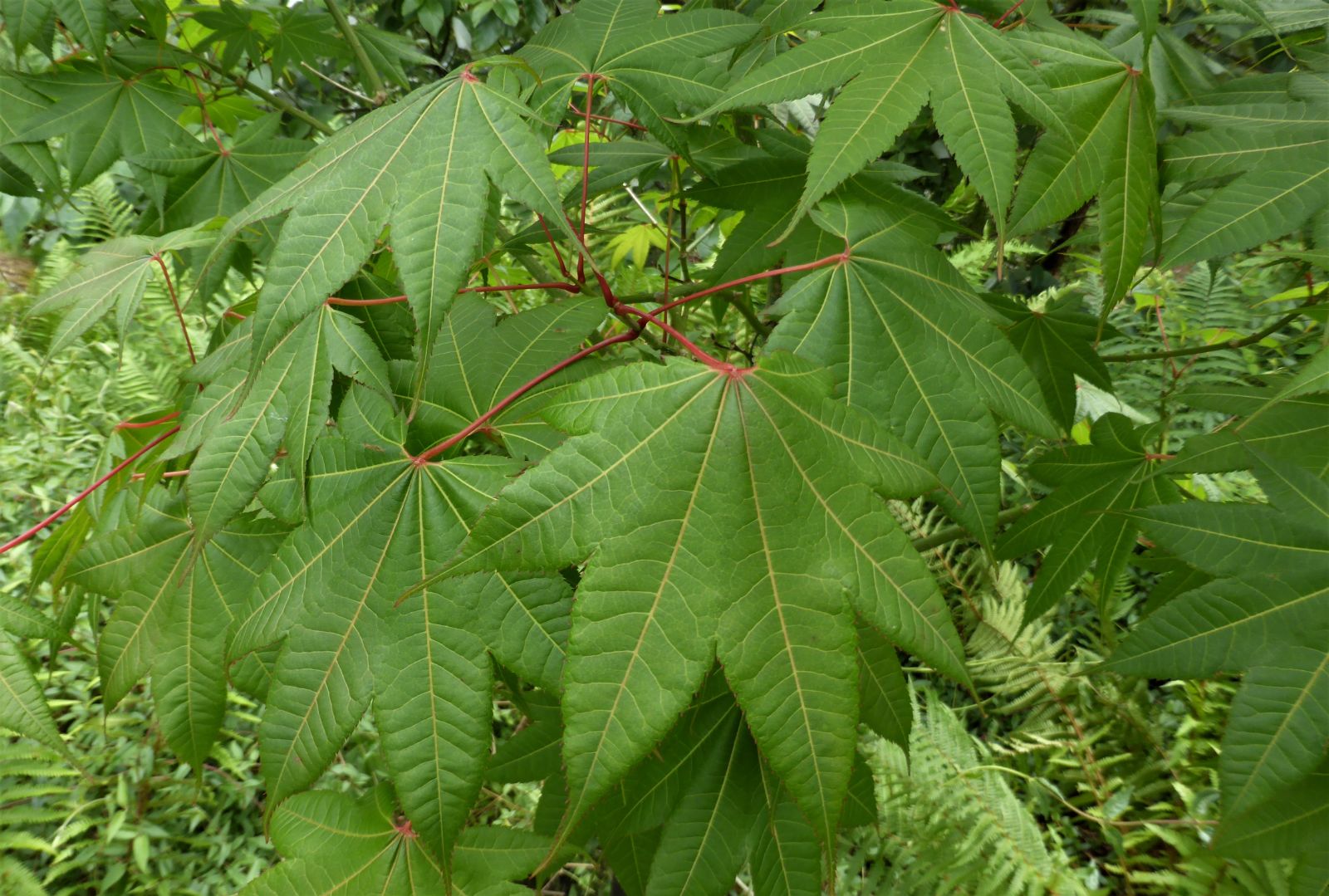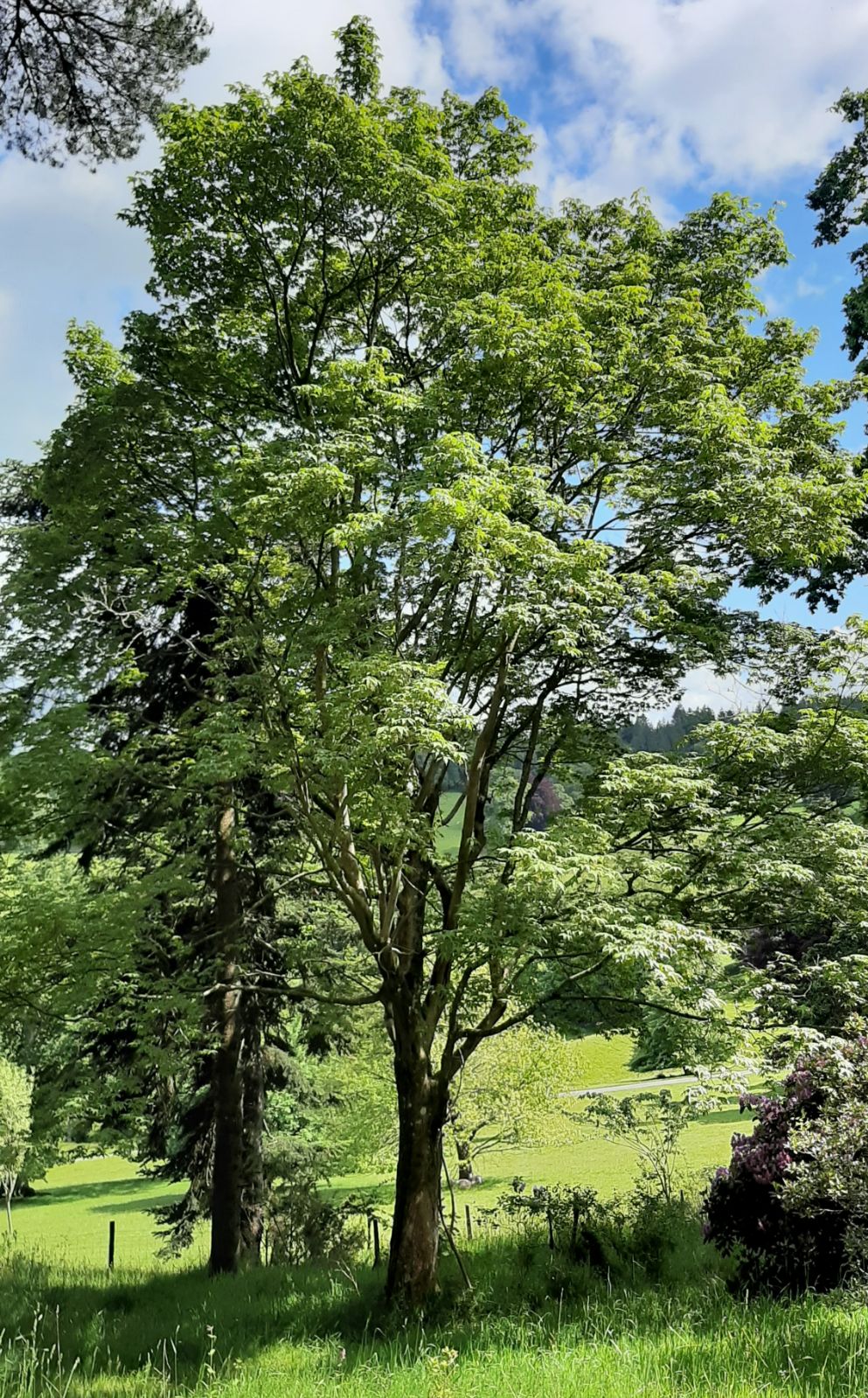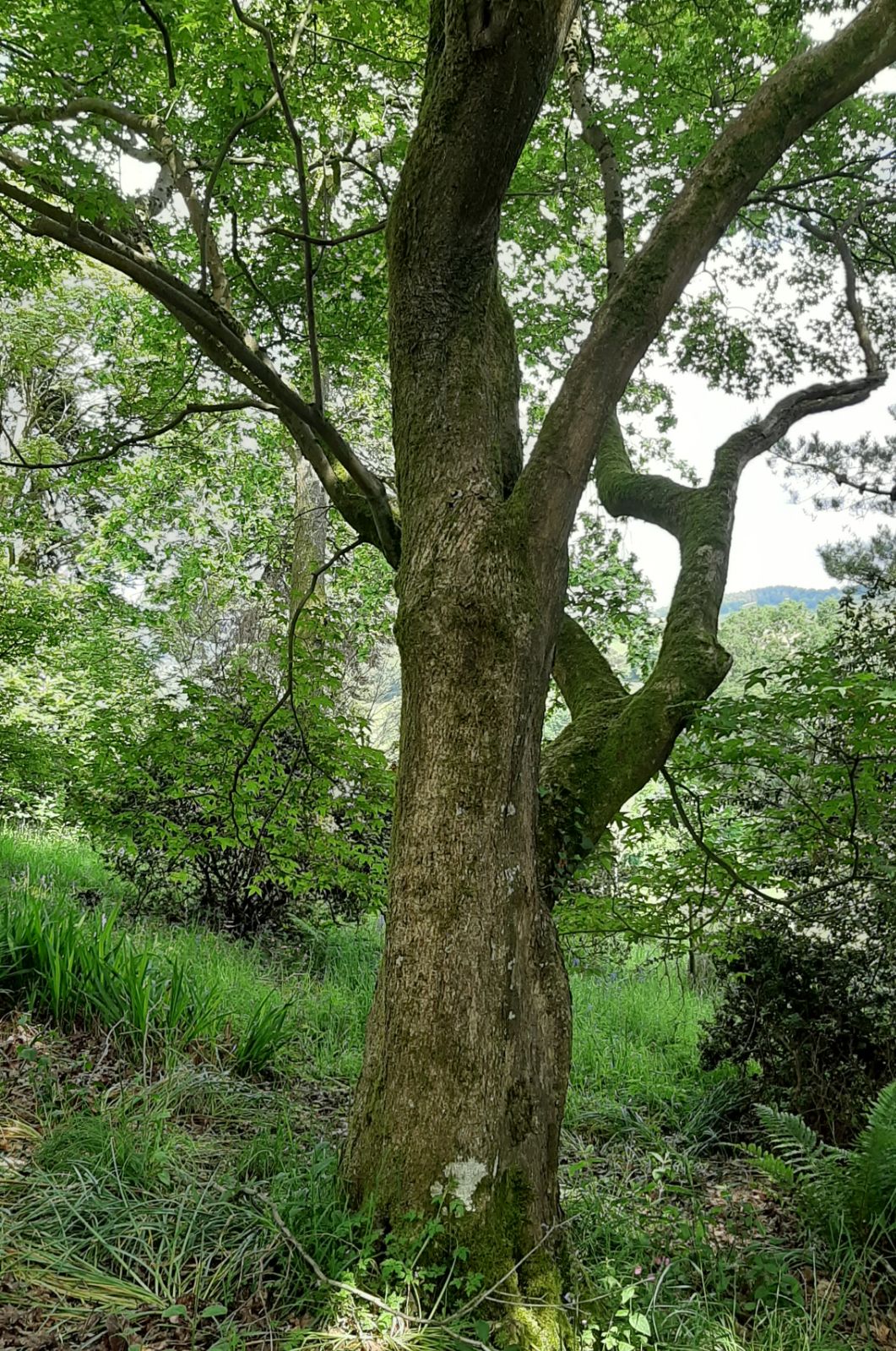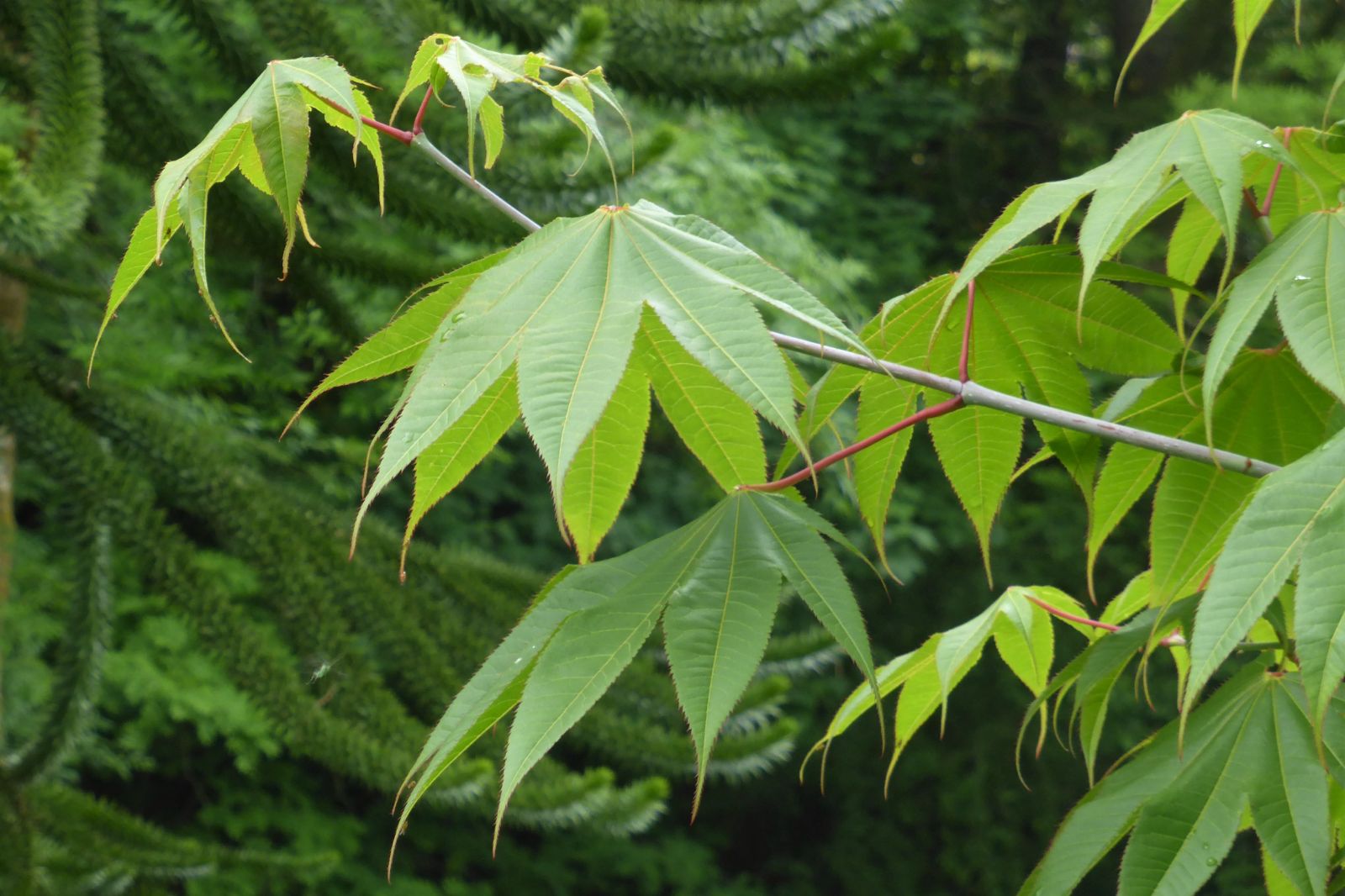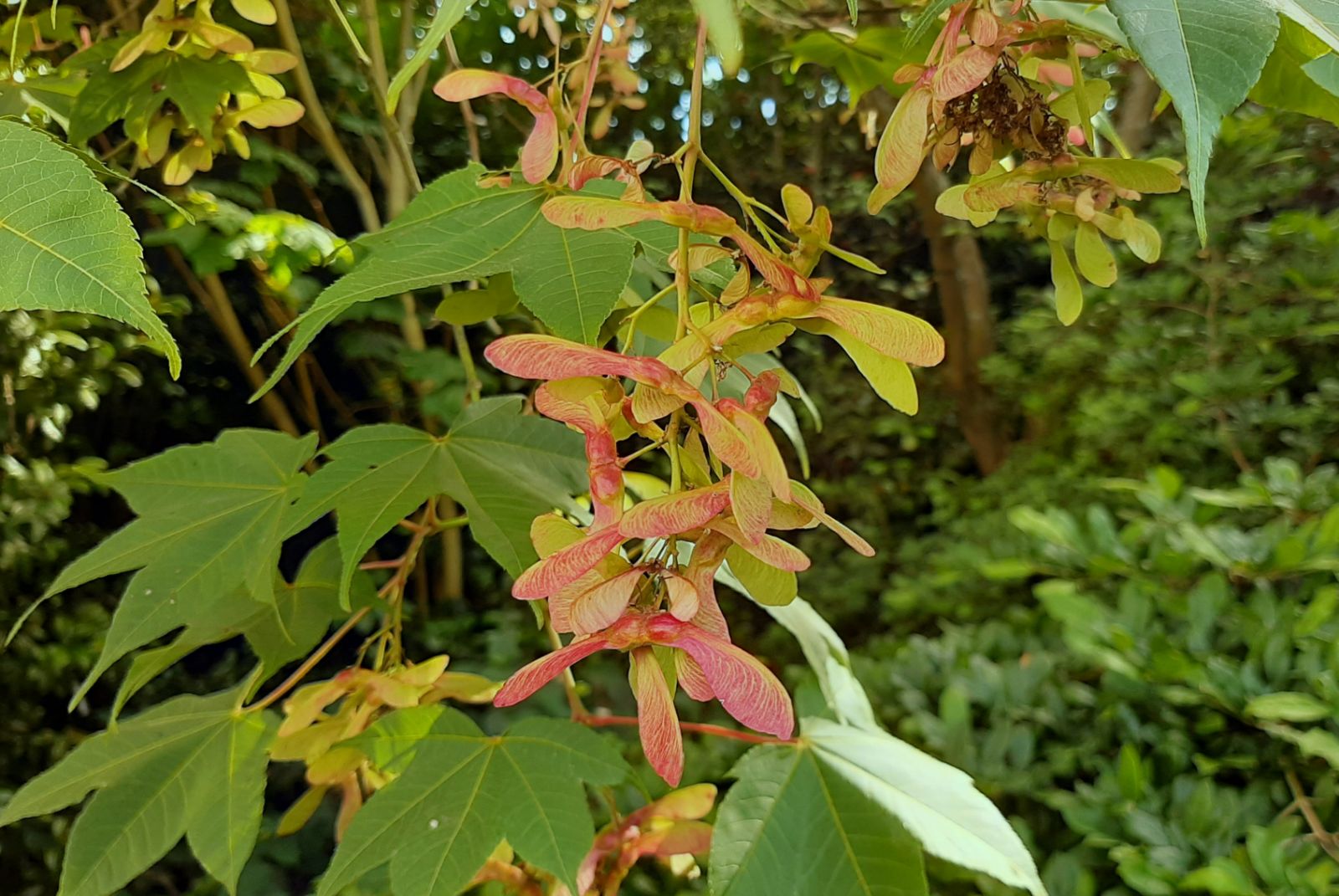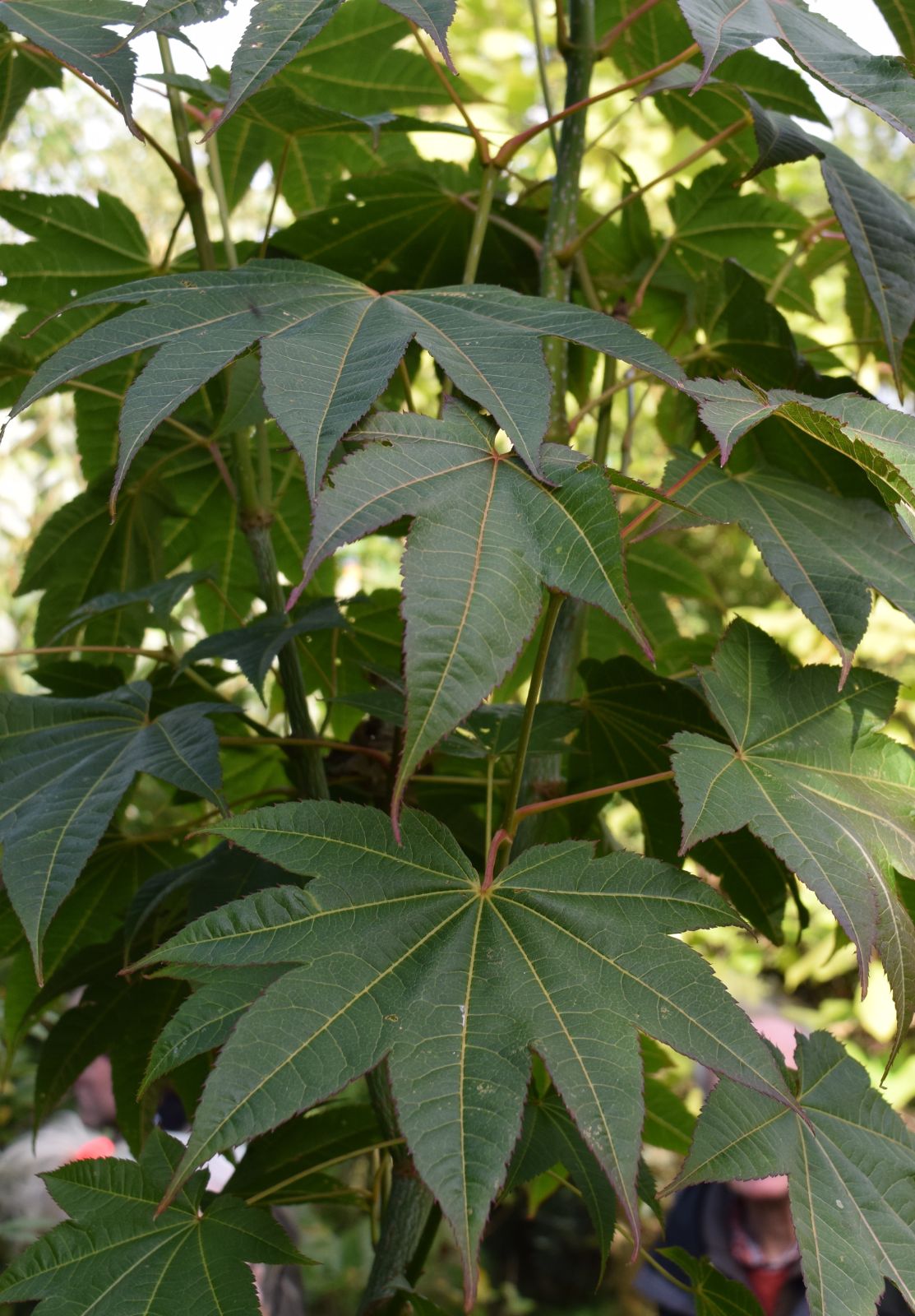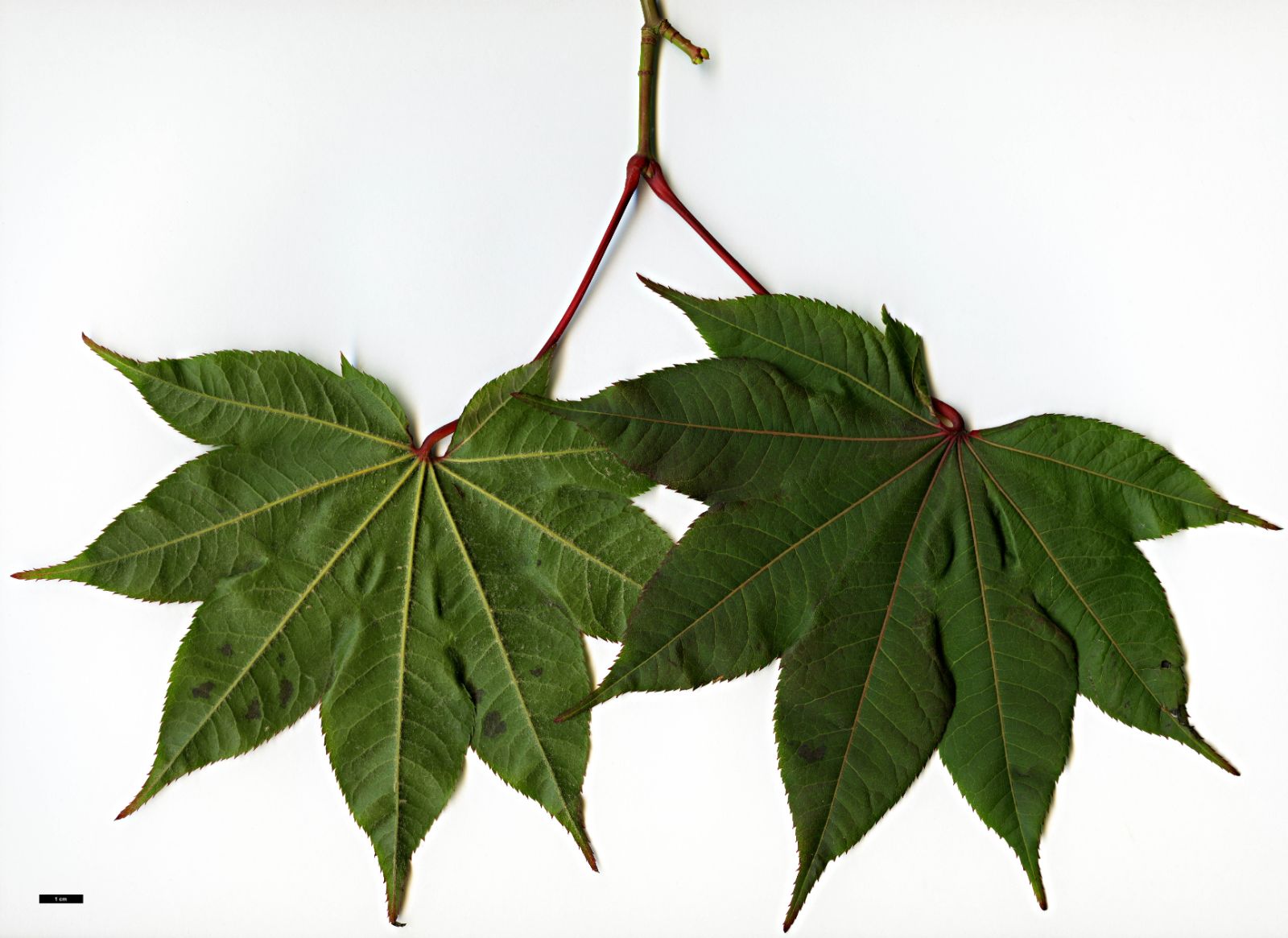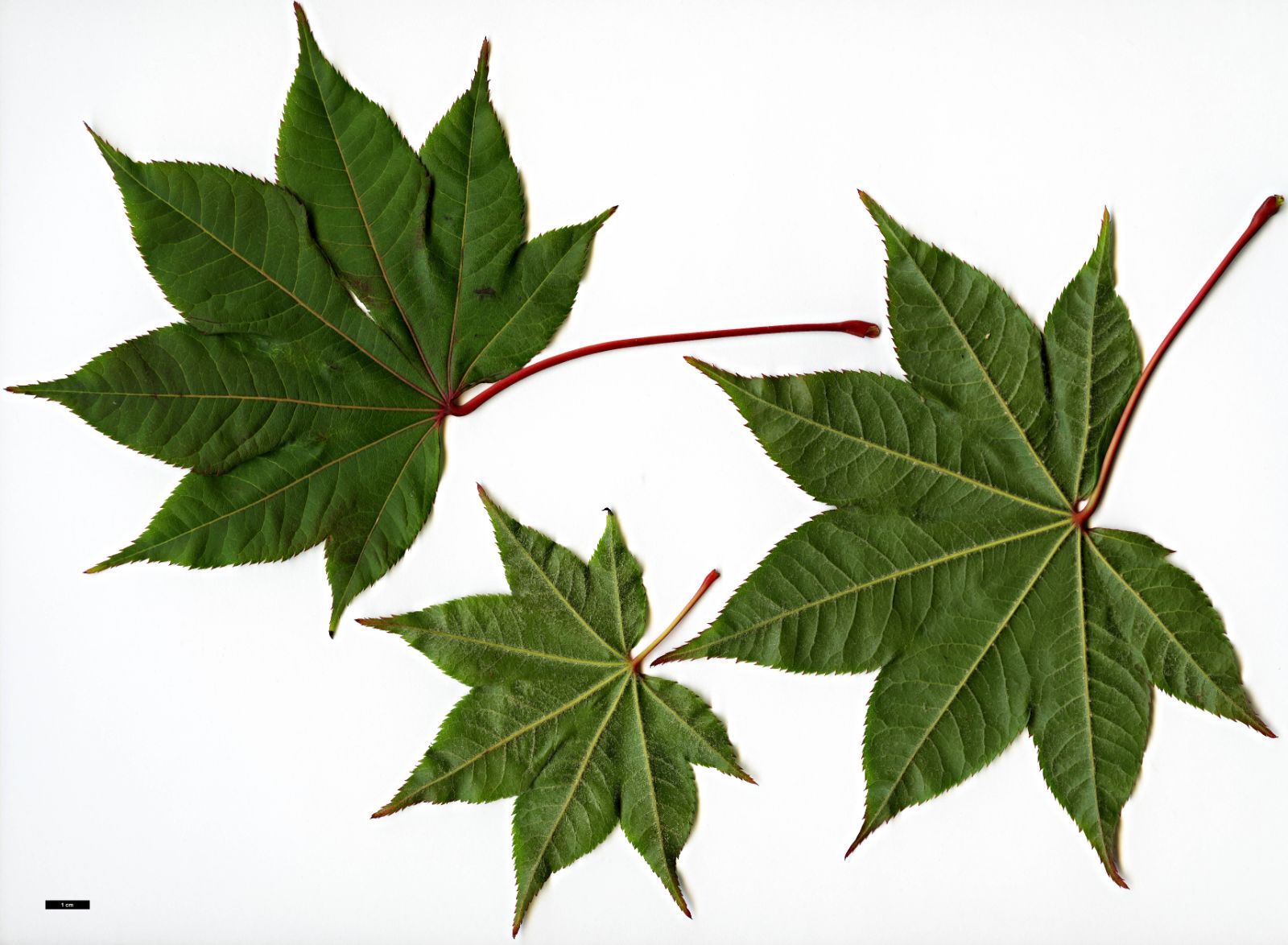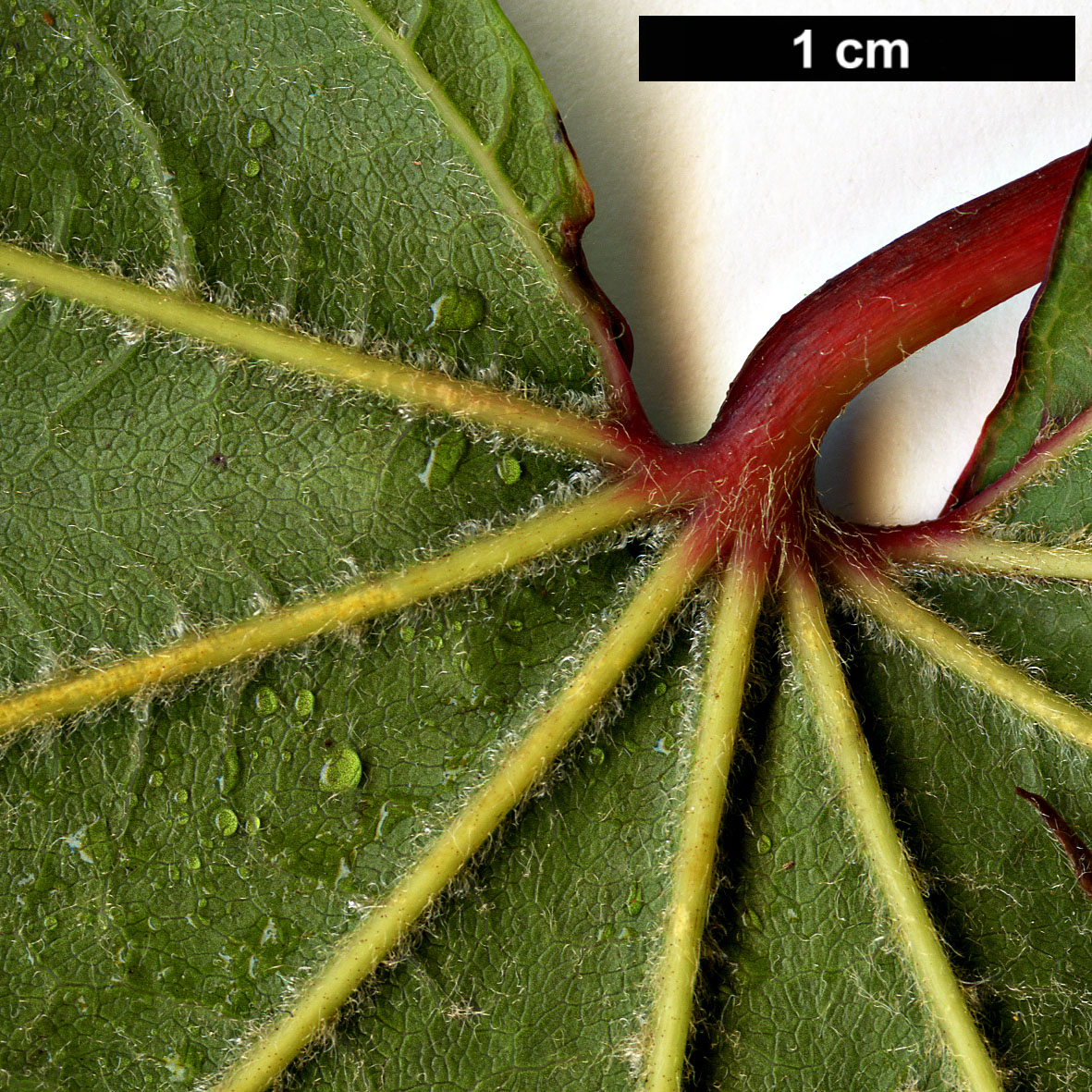Acer campbellii
Sponsor
Kindly sponsored by
Lawrence Banks
Credits
Dan Crowley (2020)
Recommended citation
Crowley, D. (2020), 'Acer campbellii' from the website Trees and Shrubs Online (treesandshrubsonline.
Genus
- Acer
- Section Palmata, Ser. Sinensia
Common Names
- Campbell's Maple
Infraspecifics
Other taxa in genus
- Acer acuminatum
- Acer amplum
- Acer argutum
- Acer barbinerve
- Acer buergerianum
- Acer caesium
- Acer calcaratum
- Acer campestre
- Acer 'Candy Stripe'
- Acer capillipes
- Acer cappadocicum
- Acer carpinifolium
- Acer 'Cascade'
- Acer caudatum
- Acer ceriferum
- Acer chapaense
- Acer chienii
- Acer circinatum
- Acer cissifolium
- Acer × conspicuum
- Acer cordatum
- Acer coriaceifolium
- Acer × coriaceum
- Acer crataegifolium
- Acer davidii
- Acer diabolicum
- Acer distylum
- Acer divergens
- Acer duplicatoserratum
- Acer elegantulum
- Acer erianthum
- Acer 'Esk Flamingo'
- Acer fargesii
- Acer fenzelianum
- Acer flabellatum
- Acer forrestii
- Acer franchetii
- Acer × freemanii
- Acer fulvescens
- Acer 'Gimborn'
- Acer ginnala
- Acer glabrum
- Acer 'Gold Coin'
- Acer granatense
- Acer grandidentatum
- Acer griseum
- Acer heldreichii
- Acer henryi
- Acer × hillieri
- Acer hookeri
- Acer hyrcanum
- Acer japonicum
- Acer kawakamii
- Acer komarovii
- Acer laevigatum
- Acer laurinum
- Acer laxiflorum
- Acer lobelii
- Acer longipes
- Acer macrophyllum
- Acer mandshuricum
- Acer maximowiczianum
- Acer maximowiczii
- Acer metcalfii
- Acer miaotaiense
- Acer micranthum
- Acer 'Mindavi'
- Acer 'Minorient'
- Acer miyabei
- Acer miyabei × campestre
- Acer monspessulanum
- Acer morifolium
- Acer 'Mozart'
- Acer oblongum
- Acer obtusifolium
- Acer okamotoanum
- Acer oliverianum
- Acer opalus
- Acer orientale
- Acer palmatum
- Acer papilio
- Acer pauciflorum
- Acer pectinatum
- Acer pensylvanicum
- Acer pentaphyllum
- Acer pentapotamicum
- Acer pictum
- Acer pilosum
- Acer pinnatinervium
- Acer platanoides
- Acer platanoides × amplum
- Acer platanoides × truncatum
- Acer × pseudoheldreichii
- Acer pseudoplatanus
- Acer pseudosieboldianum
- Acer pubinerve
- Acer pycnanthum
- Acer rubescens
- Acer rubrum
- Acer rufinerve
- Acer saccharinum
- Acer saccharum
- Acer sempervirens
- Acer 'Serpentine'
- Acer serrulatum
- Acer shenkanense
- Acer sieboldianum
- Acer sikkimense
- Acer 'Silver Cardinal'
- Acer 'Silver Ghost'
- Acer sinense
- Acer sinopurpurascens
- Acer spicatum
- Acer stachyophyllum
- Acer taronense
- Acer tataricum
- Acer tegmentosum
- Acer tenellum
- Acer tetramerum
- Acer tibetense
- Acer tonkinense
- Acer triflorum
- Acer truncatum
- Acer tschonoskii
- Acer turkestanicum
- Acer tutcheri
- Acer ukurunduense
- Acer velutinum
- Acer wardii
- Acer 'White Tigress'
- Acer wilsonii
- Acer × zoeschense
A deciduous tree usually to 15 m, though up to 30 m. Bark green when young, turning grey to brown with age, smooth. Branchlets glabrous, purplish-red or greenish, bloomed or not, turning darker. Buds ovoid, with 4 pairs of scales. Leaves broadly pentagonal in outline, base cordate to cuneate, (5–)7(–9) lobed, 8–15 × 9–22 cm, lobes ovate, apically acute or acuminate, margins serrulate with acuminate teeth, upper surface somewhat glossy, mid-green, lower surface paler, glabrous except for tufts in vein axils; petiole 4–5 cm long, red to green, glabrous; autumn colours yellow to purple. Inflorescence terminal, paniculate, many flowered. Flowers 5-merous, usually dioecious, pedicels long and slender, stamens eight, inserted inside of the pubescent nectar disc, ovary pilose. Samaras 2.3–2.8 cm long, wings spreading nearly horizontally. Nutlets ovoid. Flowering in May, with unfolding leaves, fruiting in September–October. (Clarke 1988; Xu et al. 2008).
Distribution Bhutan Myanmar China Southern Sichuan, southern Xizang, northwestern Yunnan India Northern regions Nepal Vietnam
Habitat Mixed forests between 1800 and 3700 m asl.
USDA Hardiness Zone 7-8
RHS Hardiness Rating H4
Conservation status Least concern (LC)
Taxonomic note The taxonomy of Acer campbellii and its relatives in van Gelderen et al.’s (1994) Series Sinensia has been much confused and a systematic study is required to satisfactorily resolve the group. While van Gelderen et al. (1994) treated A. campbellii as a broad species comprising five subspecies, the Flora of China account (Xu et al. 2008) treated these as distinct species (reducing subsp. chekiangense to a synonym of Acer pubinerve). The treatment of Xu et al. (2008) is broadly followed here, save for the inclusion of A. flabellatum var. yunnanense, which those authors treat as a synonym of A. flabellatum. Xu et al. (2008) placed in synonymy several of the species recognized by van Gelderen et al. (1994) and these are listed in synonymy under the relevant species here. Further information on the taxonomic debate around each of the accepted taxa is included in the various accounts. A tentative key to the identification of the Series Sinensia taxa as treated here is provided below. Of these, five are not currently known in cultivation. These are: A. chingii, A. kuomeii, A. kweilinense, A. miaoshanicum and A. pseudowilsonii, a new species described from Thailand in 2010 (Chen 2010). A. linganense, treated as part of Series Sinensia by van Gelderen et al. (1994) is considered closer to A. ceriferum by Xu et al. (2008), rather than to members of Series Sinensia (sensu van Gelderen et al. (1994)) Both of these taxa were treated as synonymous with A. duplicatoserratum by Chang & Woo (2011). Acer confertifolium, another included in Series Sinensia by van Gelderen et al. (1994) and treated as a species by Xu et al. (2008) has since been confined to the synonymy of A. tutcheri. Both A. linganense and A. confertifolium are thus omitted from the key. It should also be noted that the four Chinese species in this group that are absent from cultivation (A. chingii, A. kuomeii, A. kweilinense, A. miaoshanicum) have differences described by Eom et al. (2011) as ‘trivial’ and ‘neither correlated with other characters nor always constant within a collection’. Further study on this group is clearly required. Within Acer campbellii Xu et al. (2008) treat var. serratifolium along with the typical var. campbellii. Var. serratifolium has pubescent veins and a cordate base and an elongated inflorescence. In the typical variety, the leaf base is usually truncate and the inflorescence dense. However, such distinctions have not been made in cultivated material.
Acer campbellii is a broad ranging species, occurring in the eastern part of the Himalayan chain into southwest China, and also in the Central Highlands of Vietnam (though absent in the north of that country). It was first discovered by a collector working for William Griffith in Darjeeling, and first introduced by Sir Joseph Hooker from his Himalayan expeditions (1847–1851), who ‘named it in 1875 for his friend, the Superintendent of the hill station at Darjeeling’ (O’Brien 2018). It has been introduced numerous time since. It appears to be more a warm-temperate species than a truely temperate one, and has thus been considered quite tender in gardens. While of course this is quite true for material from parts of its range, particularly so lower elevations, it has proved hardier when introduced from more suitable provenances, such as at altitude in Bhutan, though in many areas it is still prone to damage by late spring frosts (D. Justice, T. Christian, pers. comms. 2020).
It has elegant foliage with serrulate margins, which help distinguish it from typical forms of the related A. flabellatum. The presence of flowers is always a helpful aid to identification (the floral disk and ovary are pubescent in A. campbellii and glabrous in A. flabellatum), and generally required to separate it from A. flabellatum var. yunnanense, which has similar leaf margins, glabrous disks and, sometimes, slightly pubescent ovaries. Seamus O’Brien paints a vivid picture of encountering A. campbellii during multiple visits to Sikkim, including on Mount Maenam where Hooker would have seen it, and where it ‘formed superb column shaped specimens to 27 m’ in the company of Magnolia campbellii, Rhododendron grande, Acer sikkimense, and Schefflera rhododendrifolia (O’Brien 2011).
Like A. flabellatum, A. campbellii is not so commonly encountered in collections as some other members of section Palmata. DJHC 0518 grows at the Hoyt Arboretum, Oregon, while examples of KR 1688, from Bhutan, grow at the David C. Lam Asian Garden, Vancouver (American Public Gardens Association 2017). Numerous specimens grow at Tregrehan in Cornwall, clearly happy in the Cornish climate, though it can do well further north in the United Kingdom if properly sited. Two young trees grow on the Bhutanese hillside at Benmore Botanic Garden in Argyll, grown on from NPSW 387 collected at c. 2950 m asl in Bhutan. However, attempting to grow it even from the hardiest of provenances at the Rogow Arboretum, Poland, would be ‘a waste of time’ (P. Banaszczak, pers. comm. 2020). Many more gatherings made in recent years bear the name A. campbellii, but it seems prudent to err on the side of caution and only cite those that have been seen and confirmed.
Another, as yet unsatisfactorily characterised taxon, relating to A. campbellii, has been introduced to cultivation on several occasions from the Hoang Lien Mountains of northern Vietnam, including collections of BSWJ 11695, BSWJ 11713, FMWJ 13369 and FMWJ 13374 (Crowley 2018). This has been circulated as A. heptaphlebium, which was treated as a synonym of A. flabellatum (as A. campbellii subsp. flabellatum) by van Gelderen et al. (1994), though it is quite distinct, with broad, shallow, ovate lobes and very large samaras. Its flowers also have petals shorter than the sepals, which in A. flabellatum are as long as one another. Furthermore, within Vietnam, A. heptaphlebium grows far further south than the Hoang Lien Mountains, from where this material has been collected. This interesting, new material, bears resemblance both to A. campbellii and A. flabellatum and is clearly a member of this group. Its predominantly seven-lobed leaves have serrated margins, while its flowers have glabrous disks and pubescent ovaries, similar to those of A. sinense. It has been most collected in its ‘red-leaved’ form, with the leaf undersides vividly, and persistently red, though all-green examples are also present in its habitat, though evidently not as attractive to the collector. Like much material collected in northern Vietnam in recent years, it is becoming established in collections in parts of our area, though the extent of its hardiness is yet to be fully established. It is also important to note that this taxon is not A. campbellii var. fantsipanense, which, despite its name, is quite unrelated and plants collected as this invariably belong to a relative of A. pectinatum in section Macrantha. See the account of that species for further details.
Identification key | ||
| 1a. | Mature foliage untoothed or remotely serrate or if serrate, only towards lobe apices | 2 |
| 1b. | Mature foliage with serrate to serrulate margins (>10 teeth per side) | 8 |
| 2a. | Mature petioles and branchlets pubescent | Acer fenzelianum |
| 2b. | Mature petioles glabrous or pubescent, branchlets glabrous | 3 |
| 3a. | Mature petioles pubescent | Acer chingii |
| 3b. | Mature petioles glabrous | 4 |
| 4a. | Mature leaves five-lobed, often glaucous beneath, branchlets and petioles stout | Acer sinense |
| 4b. | Mature leaves three to five-lobed, green beneath, otherwise different from above | 5 |
| 5a. | Mature leaves membranous to chartaceous, three to five lobed, basal lobes often present, though weakly so, margins occasionally serrate in upper parts | Acer wilsonii |
| 5b. | Mature leaves subcoriaceous to coriaceous, three lobed, margins untoothed or occasionally dentate | 6 |
| 6a. | Samaras less than 4 cm long | Acer tonkinense |
| 6b. | Samaras at least 4 cm long | 7 |
| 7a. | Inflorescence short, corymbose | Acer calcaratum |
| 7b. | Inflorescence long, paniculate | Acer pseudowilsonii |
| 8a | Leaves usually three-lobed, flowers 4-merous | Acer tutcheri |
| 8b. | Leaves usually three to five or more-lobed, flowers 5-merous | 9 |
| 9a. | Leaves three to five-lobed, or five-lobed, additional basal lobes sometimes present | 10 |
| 9b. | More than 5-lobed leaves always present (basal lobes sometimes small) | 15 |
| 10a. | Ovary pubescent | 11 |
| 10b. | Ovary glabrous | 14 |
| 11a. | Petiole glabrous | Acer elegantulum |
| 11b. | Petiole pubescent | 12 |
| 12a. | Leaf margins serrulate | Acer miaoshanicum |
| 12b. | Leaf margins serrate | 13 |
| 13a. | Petals shorter than sepals, leaves 10–12 × 11–14 cm | Acer pubinerve |
| 13b. | Petals the same length as sepals, leaves 5–8 × 7–11 cm | Acer kweilinense |
| 14a. | Leaves with pubescent tufts in axils beneath, margin serrulate | Acer oliverianum |
| 14b. | Leaves glabrous beneath, margins crenate to serrate | Acer serrulatum |
| 15a. | Leaf margins sparsely crenate | Acer kuomeii |
| 15b. | Leaf margins serrate to serrulate | 16 |
| 16a. | Leaf margins serrate, sometimes jaggedly so | 17 |
| 16b. | Leaf margins serrulate to setose serrulate | 18 |
| 17a. | Floral disk glabrous, ovary glabrous | Acer flabellatum |
| 17b. | Floral disk glabrous, ovary pubescent | Acer sp. nov. |
| 18a. | Leaf margins serrulate, floral disk and ovary densely pubescent | Acer campbellii |
| 18b. | Leaf margins serrulate to setose serrulate, floral disk glabrous, ovary sometimes slightly pubescent | Acer flabellatum var. yunnanense |
'Boney Fingers'
RHS Hardiness Rating: H4
A dwarf form, Acer campbellii ‘Boney Fingers’ turns yellow in autumn (Buchholz & Buchholz Nursery 2019). Whether it belongs to this taxon or to A. flabellatum requires confirmation.
'Exuberance'
RHS Hardiness Rating: H4
Acer campbellii ‘Exuberance’ was discovered and introduced by the Buchholz Nursery in Oregon. Its new growth is purplish-red and it turns a strong orange in autumn (Junker’s Nursery 2017; Buchholz & Buchholz Nursery 2019). Like ‘Boney Fingers’, whether it belongs to this taxon or to A. flabellatum requires confirmation.

